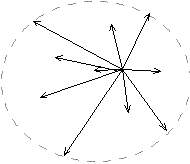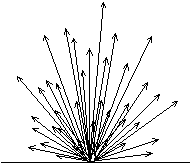Accident Information Special News No.33 (Laminated and Tempered Glass Tableware)
January 17, 2001
Article Test Results on "Laminated and Tempered Glass Tableware"
Ministry of Economy, Trade and Industry has performed tests for settling the accident information and elucidating the origins based on the accident information.
From the viewpoint of contributing to the prevention of the accident from occurring again, the Ministry of Economy, Trade and Industry completed the article test related to the quality and safety of the "Laminated and tempered glass tableware" so as to release the outlines of the test results.
1. Tested Articles
The tested articles were identical products with the accidental product used 45 times in the appropriate elementary school (hereinafter referred to as "accident identical article"), new products of identical specifications (hereinafter referred to as "identical article"), and besides them, air-cooled tempered glass tableware, tempered porcelain tableware, and general porcelain tableware were used as comparison products.
| Sample | Types | Outside diameter (mm) |
Length (mm) |
Weight (g) |
Reference | |
|---|---|---|---|---|---|---|
| Accident identical article Identical article |
Tempered glass | Bowl | 126 | 60 | 166 | Laminate tempering, Thermal resistance |
| Comparison article | Tempered glass | Bowl | 121 | 52 | 167 | Air-cooled tempering |
| Tempered porcelain | Rice bowl | 135 | 65 | 211 | Alumina system | |
| Porcelain | Dish | 142 | 35 | 162 | ||
- Laminate tempering:
- Method for enhancing the fracture strength by sticking two types of glass with different thermal expansion coefficients in the molten states and cooling them so as to form a compressive stress layer on the surface layer
- Air-cooled tempering:
- Method for enhancing the fracture strength by heating the glass to a high temperature close to the softening point, then rapidly cooling it so as to form a compressive stress layer on the surface layer
2. Drop Test I (Accident Identical Article)
To inquire whether the accident identical articles are broken in dropping, 10 pieces of them were made to naturally drop under the conditions expressed in Table 2 to confirm the dispersion states in dropping.
| Floor | P tile*1 |
|---|---|
| Drop height | 70cm*2 |
| Collision part | Edge, bottom |
- *1:
- The P tile floor of the elementary school was reproduced by setting 30cm-square P tiles of thickness 2mm on concrete.
- *2:
- 70cm is the height of the elbow of a child (7-year old child)
(Referred to Body Measurement Data of Japanese, "Issued by Research Institute of Human Engineering for Quality Life")
The test results are as Table 3 and the followings were confirmed.
- (1)When these were made to drop from the edges, three out of ten were broken, however, when made to drop from the bottom, none of them were broken.
- (2)As for the dispersion states of the fragments in breaking, the finely broken fragments were violently dispersed to the surrounding.
- (3)There were innumerable needle-like fine fragments and acute thin pieces.
| Collision parts | Affirmative/negative of fracture | Dispersion situations in breaking |
|---|---|---|
| Edge | Three of them were broken. | In a case of dispersing to the highest, the fine pieces were violently leaped to the highest 200cm or more and dispersed to the range of approximately 300cm in the radius from the drop point. |
| Bottom | None were broken. |
3. Drop Test II (Identical Article and Comparison Article)
To compare the drop strength of the identical article to that of the comparison article, 5 unused Samples were made to naturally drop under the conditions expressed by Table 4 to confirm whether they were broken.
| Floor | Concrete*3, P tile*1, and flooring*4 |
|---|---|
| Drop height | 110cm*5, 70cm*2 |
| Collision part | Edge, bottom |
- *3:
- The cover of a gutter was used as a concrete floor.
- *4:
- The floor of the flooring is formed by fixing wooden floor materials (plywood) of 12mm in thickness together by several square timbers and the drop points are set to above the square timbers.
- *5:
- 110cm is the height of the elbow of the adult of a stature of 170 centimeters.
The followings were confirmed as the test results.
- (1)Though some of the identical articles and the air-cooled tempered glass were broken against the concrete, none of them were broken against the P tile and the flooring. They have higher drop strength than the tempered porcelain and the porcelain.
- (2)From the results of 2.(1), some of the accident identical articles were broken against the P tile, however, the identical articles were not broken.
- (3)When the tempered porcelain and the porcelain of the comparison articles were apt to be broken from dropped from the edges but relatively strong in dropped from the bottom.
4. Drop Test III (Dispersion Situations)
To compare the dispersion situations of fragments of the identical articles and the comparison articles, 3 unused articles of the respective Samples for each were made to naturally drop and broken under the conditions expressed in Table 5, and examined the dispersion situations.
However, the identical articles and the tempered glasses of the comparison articles were not broken against the P tile so that the front/rear whole faces were damaged by abrasive paper (No.180) and tested again.
| Floor | P tile*1 |
|---|---|
| Drop height | 110cm*5, 70cm*2 |
| Collision parts | Edge, bottom |
The test results are denoted in Table 6 and Table 7 and the follows were confirmed.
- (1)Maximum dispersion height
- a.When being dropped from the edge, the maximum dispersion height of the identical article was 200cm or more and, when being dropped from the bottom, the dispersion height was 120cm in dropped from the height 70cm and 165cm in dropped from 110cm respectively.
- b.The fragments of the air-cooled tempered glass of the comparison article were also dispersed into fine pieces, however, the number of the dispersed fragments was less than that of the identical articles, and the maximum dispersion height was approximately 110cm.
- c.The tempered porcelain and the porcelain were broken into large pieces and the dispersion height was 30cm - 50cm, however, in the drop height of 110cm, several fragments were sometimes diagonally dispersed in the height of approximately 80cm.
- (2)Dispersion ranges
The spreading ways of the dispersion range can be roughly classified into elliptical shapes and circular shapes as expressed in Table 6, the identical articles and the air-cooled tempered glass of the comparison articles were dispersed into multiple fragments in the rage of 200 - 300cm in the radius, while the tempered porcelain and the porcelain were dispersed into a few fragments in the range of 100 - 250 in the radius. - (3)Differences in shapes of the fragments
The fragments of the identical articles and the comparison articles were not only finer than those of the tempered porcelain and the porcelain but there were innumerable needle-like fine pieces and acute pieces except for the fine fragments. When the identical articles are made to drop from the edge and broken, the edge was deemed to be fine pieces, however, when dropped from the bottom, the edge part was left as large pieces. No large pieces of the edge part were left in the fragments of the accidental articles so that it was considered that the accidental articles were dropped from the edge and broken. - (4)Difference in the drop height
There are such tendencies in every Sample that, when the drop height becomes higher, the number of fragments flying high increases and the number of the fragments dispersing far increases.
| Sample | Cases of dispersing into circular shapes | Cases of dispersing into elliptical shapes | |
|---|---|---|---|
| Identical articles | Laminated and tempered glass |

|

|
| Comparison article | Air-cooled tempered glass | ||
| Tempered porcelain |

|

|
|
| Porcelain | |||
| Sample | Collision Parts | Situations of Dispersion | Maximum dispersion height | Maximum dispersion ranges | ||||
|---|---|---|---|---|---|---|---|---|
|
Drop height 110cm |
Drop height 70cm |
Drop height 110cm |
Drop height 70cm |
|||||
| Identical Articles | Laminated and Tempered Glass | Edge |

|
Many fine pieces are violently dispersed in the vertical direction. However, some of them are diagonally dispersed according to the inclination of the tableware. |
200cm or more |
200cm or more |
300cm | 250cm |
| Bottom |

|
Many fine pieces radially dispersed. | 165cm | 120cm | 280cm | 250cm | ||
| Comparison Articles | Air-Cooled Tempered Glass | Edge |

|
Though many fragments are diagonally and highly dispersed, the number of fragments is less than that of the identical articles. | 115cm | 110cm | 280cm | 190cm |
| Bottom |

|
Though many fragments are radially dispersed, the number of the fragments is less than that of the identical articles. | 70cm | 65cm | 170cm | 170cm | ||
| Tempered porcelain |
Edge |

|
These are broken into large pieces, not dispersed so much, and a few numbers of fine pieces are dispersed in a case of the drop height 110cm. | 85cm | 30cm | 250cm | 150cm | |
| Bottom | None of them are broken. | - | - | - | - | |||
| Porcelain | Edge |

|
These are broken into large pieces and not dispersed so much. | 50cm | 45cm | 180cm | 100cm | |
| Bottom |

|
These are broken into large pieces, diagonally and relatively highly dispersed in the drop height of 110cm, however, none of them are dispersed in the drop height of 70cm. | 85cm | 35cm | 200cm | 180cm | ||
- The figures in the situations of dispersion are image figures of one dispersed the highest in the three articles which are made to break.
- The maximum dispersion height is the height of a fragment dispersed to the highest in the broken three articles and the maximum dispersion range shows the distance of the fragment dispersed furthest from the drop point.
Contact us
- Consumer Product Safety Public Relations Division Product Safety Technology Center National Institute of Technology and Evaluation
-
Phone number:+81-6-6612-2066
Fax number:+81-6-6612-1617
Address:1-22-16 Nankokita, Suminoe-ku, Osaka-shi, Osaka 5590034, Japan MAP